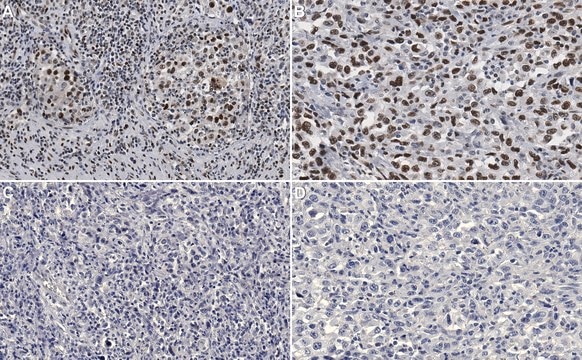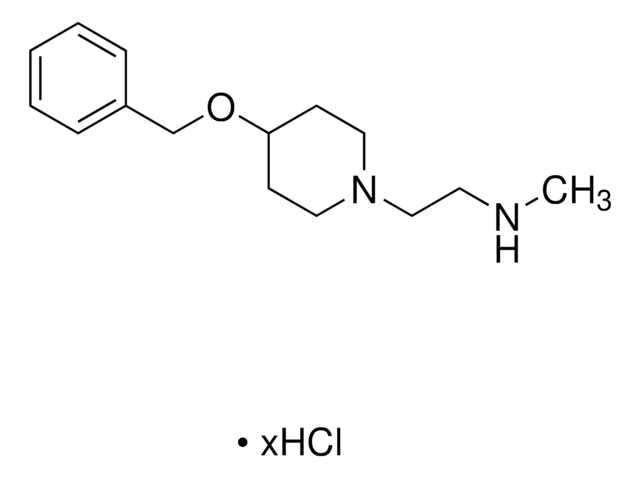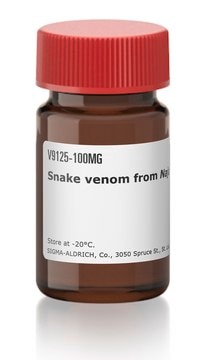05-807
Anti-phospho-CREB (Ser133) Antibody, clone 634-2
clone 634-2, Upstate®, from mouse
Synonym(s):
active transcription factor CREB, cAMP responsive element binding protein 1, cAMP-response element-binding protein-1, transactivator protein
About This Item
Recommended Products
biological source
mouse
Quality Level
antibody form
purified antibody
antibody product type
primary antibodies
clone
634-2, monoclonal
species reactivity
rat, mouse
manufacturer/tradename
Upstate®
technique(s)
immunocytochemistry: suitable
immunofluorescence: suitable
western blot: suitable
isotype
IgG1κ
NCBI accession no.
UniProt accession no.
shipped in
dry ice
target post-translational modification
phosphorylation (pSer133)
Gene Information
human ... CREB1(1385)
General description
Specificity
Immunogen
Application
1:500 to 1:32,000 dilutions of this lot detected CREB peptide containing phosphoserine 133. The antibody did NOT recognize the nonphosphorylated peptide of the same sequence
Immunofluorescence / Immunocytochemistry:
This antibody has been reported by an independent laboratory to detect phospho-CREB (Ser133) using immunofluorescence.
Epigenetics & Nuclear Function
Transcription Factors
Quality
Western Blot Analysis:
A 1:1,000 to 1:4,000 dilution of this lot detected phospho-CREB (Ser 133) in RIPA lysates from forskolin treated rat PC-12 and mouse 3T3/A31 cells (Figure A).
Target description
Physical form
Storage and Stability
Analysis Note
Human breast carcinoma, forskolin- and FGF-treated SK-N-MC cell extracts.
Other Notes
Legal Information
Disclaimer
Not finding the right product?
Try our Product Selector Tool.
recommended
wgk_germany
WGK 1
Certificates of Analysis (COA)
Search for Certificates of Analysis (COA) by entering the products Lot/Batch Number. Lot and Batch Numbers can be found on a product’s label following the words ‘Lot’ or ‘Batch’.
Already Own This Product?
Find documentation for the products that you have recently purchased in the Document Library.
Our team of scientists has experience in all areas of research including Life Science, Material Science, Chemical Synthesis, Chromatography, Analytical and many others.
Contact Technical Service




